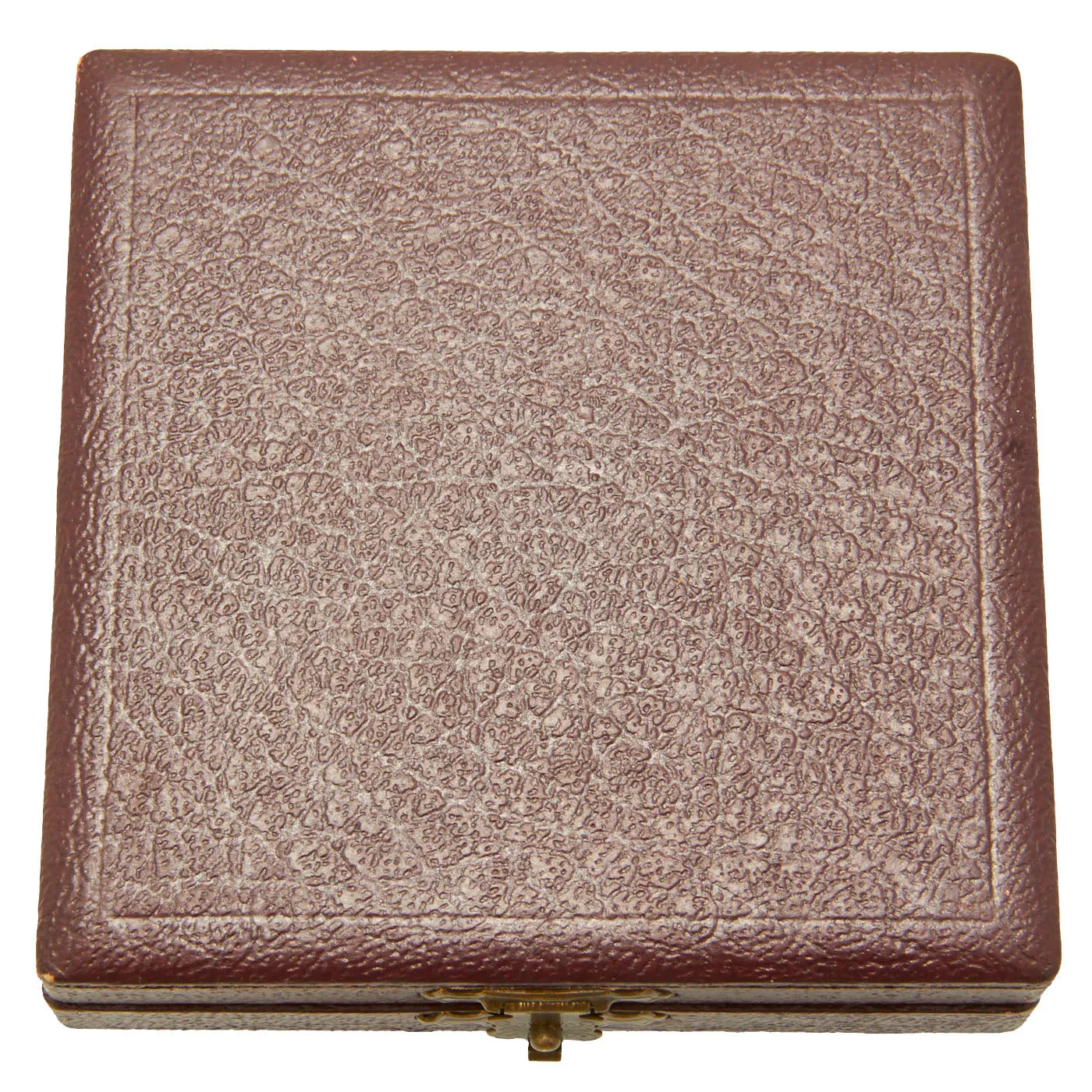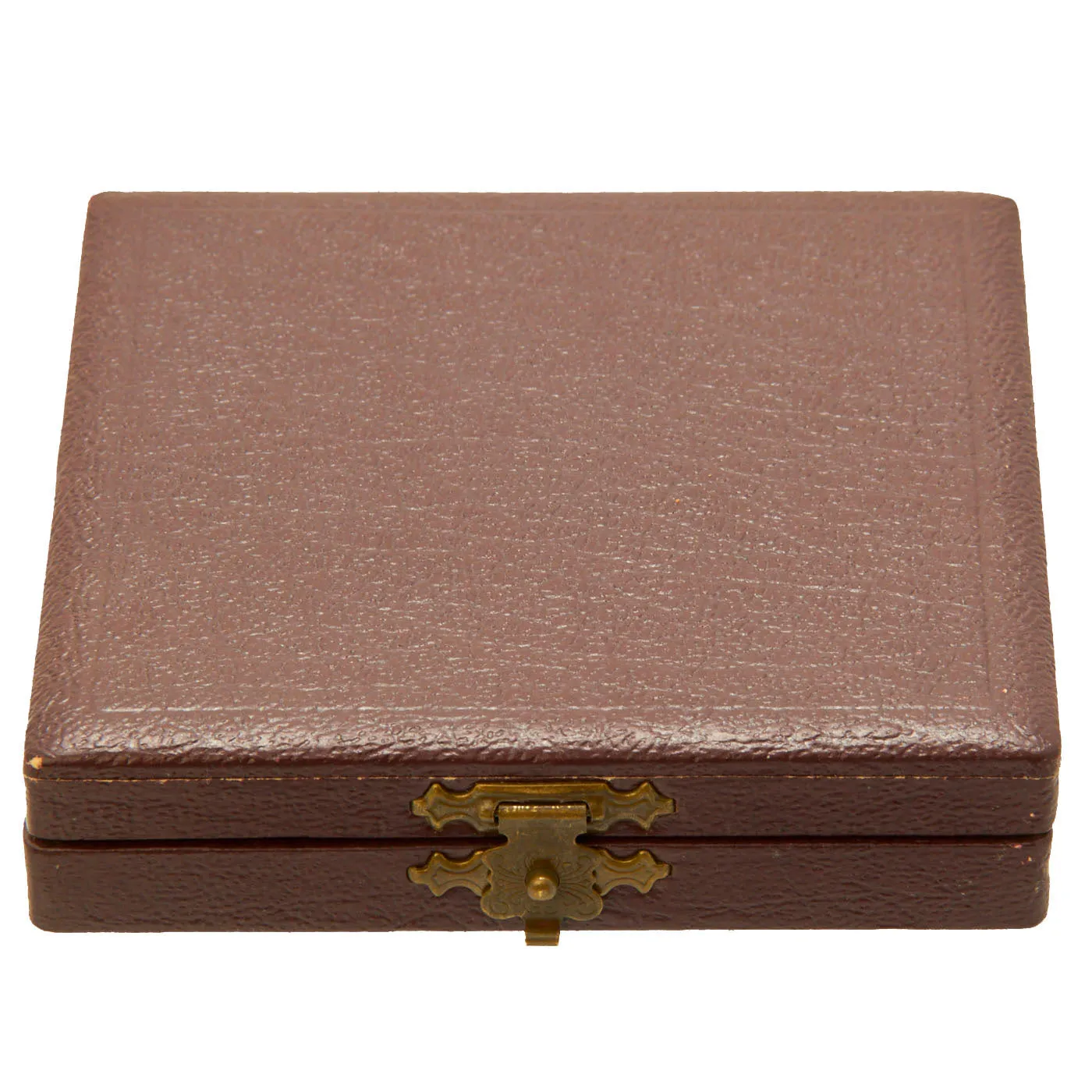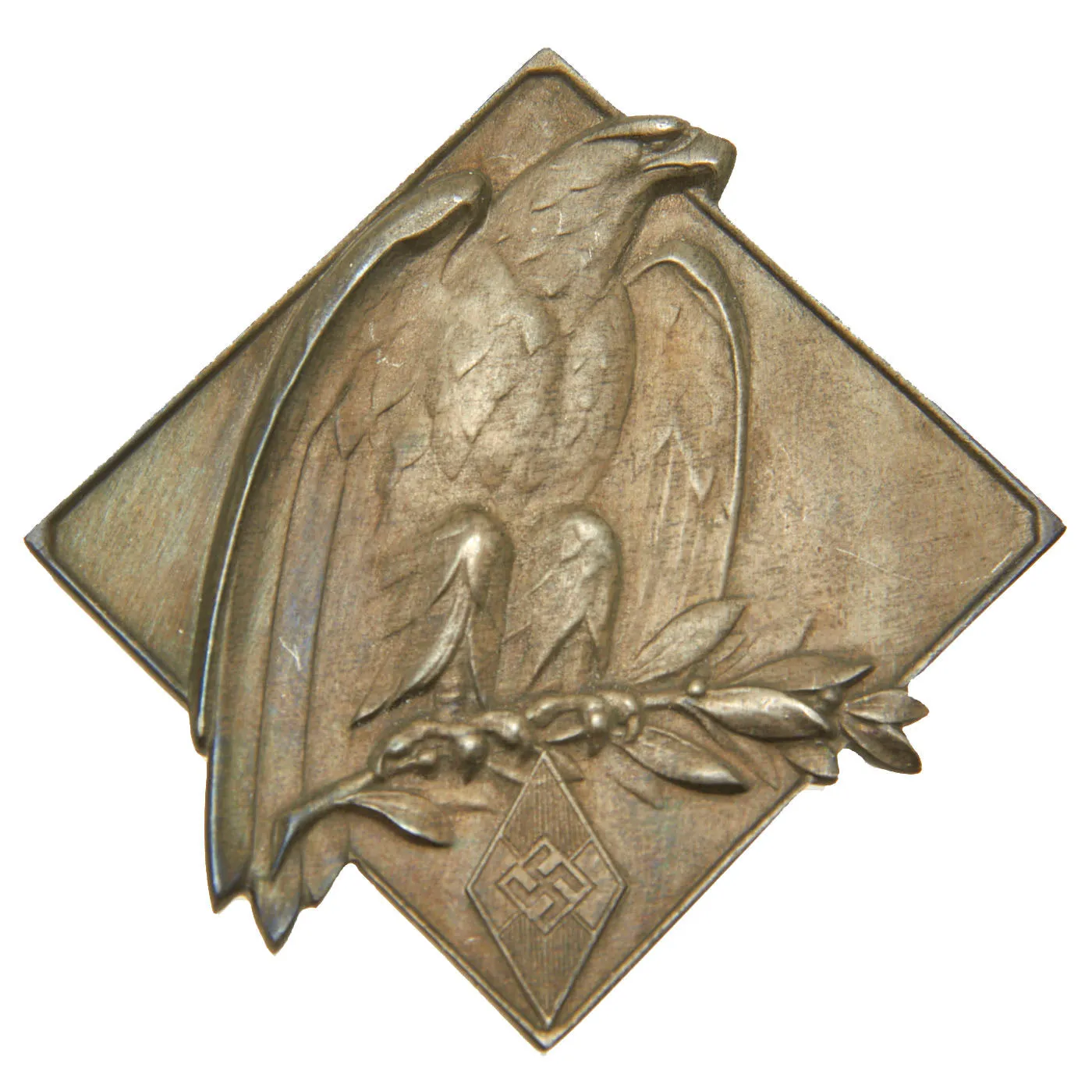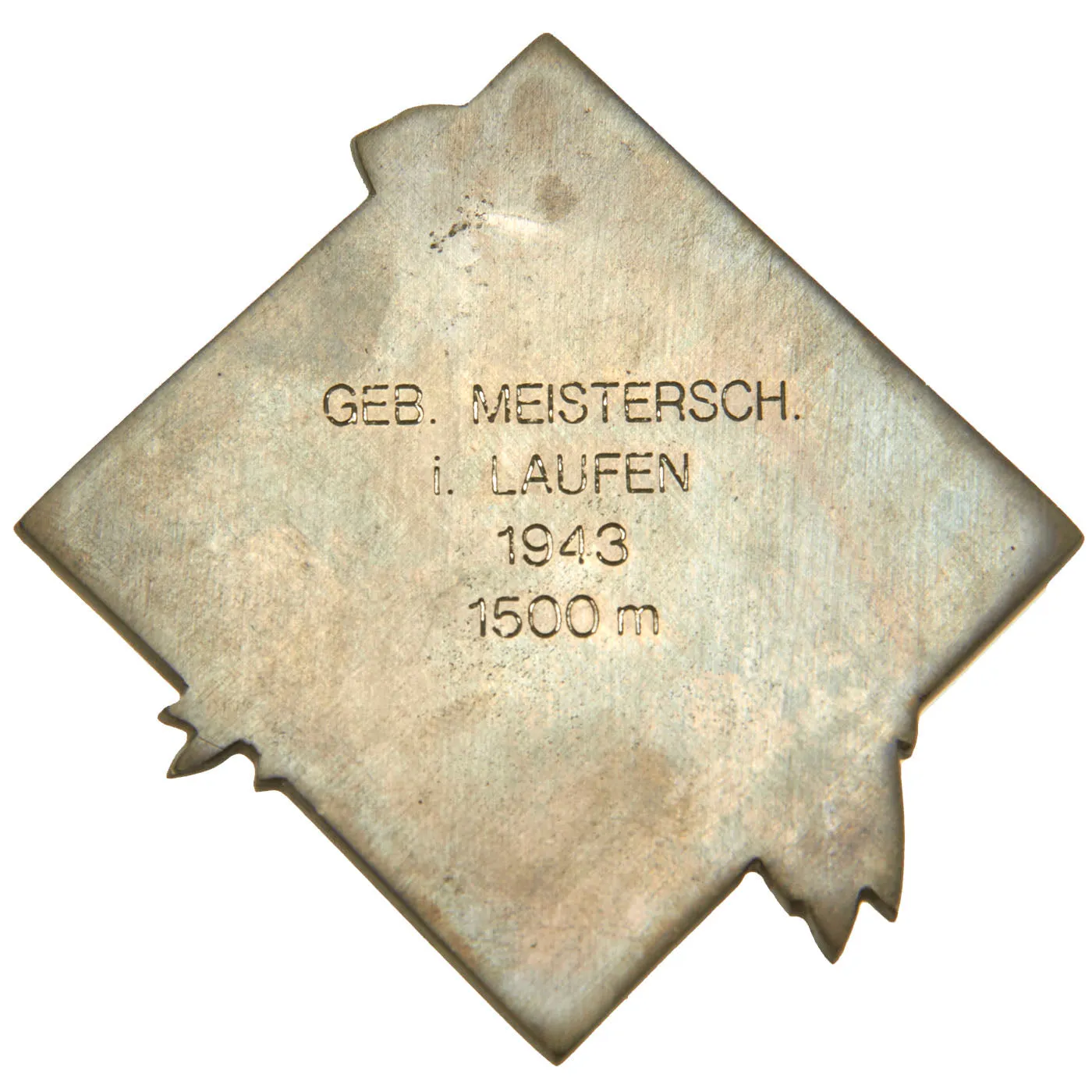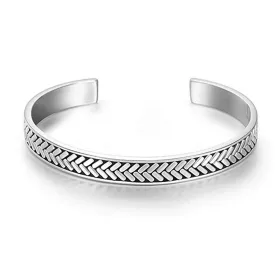Original Item: Only One Available. This is a very nice German WWII Era Cased Presentation "Table Medal", a large award usually displayed on a shelf or table, as the name implies. The medal itself measures about 2 ¾” in diameter, and is 5mm thick, made of die struck zinc alloy. It comes in a very nice satin and velvet lined case measuring about 4" square, with a functional hinge and lock.
The front of the award features an eagle, wings down clutching a branch with the HJ diamond beneath it. The color is a beautiful bronze now and all designs are still very easily discernible. The reverse of the award has the following text:
GEB. MEISTERSCH.
i. LAUFEN
1943
1500m
That loosely translates to being a championship prize for a 1500 meter race in 1943. “AH” proclaimed at the 1935 Nuremberg Rally: "In our eyes the German boy of the future must be slender and supple, swift as greyhounds, tough as leather and hard as Krupp steel. We must bring up a new type of human being, men and girls who are disciplined and healthy to the core. We have undertaken to give the German people an education that begins already in youth and will never come to an end... Nobody will be able to say that he has a time in which he is left entirely alone to himself."
Physical fitness, as well as schooling in the NSDAP ways was very important to the Reich, and they made sure to instill both mental and physical discipline.
This award is in great condition and comes ready to display with the original box!
In 1922, the Munich-based NSDAP established its official youth organisation called Jugendbund der NSDAP. It was announced on 8 March 1922 in the Völkischer Beobachter, and its inaugural meeting took place on 13 May the same year. Another youth group was established in 1922 as the Jungsturm Adolf “AH”. Based in Munich, Bavaria, it served to train and recruit future members of the Sturmabteilung (SA), the main paramilitary wing of the NSDAP Party at that time.
One reason the HJ so easily developed was that regimented organisations, often focused on politics, for young people and particularly adolescent boys were a familiar concept to German society in the Weimar Republic. Numerous youth movements existed across Germany prior to and especially after World War I. They were created for various purposes. Some were religious and others were ideological, but the more prominent ones were formed for political reasons, like the Young Conservatives and the Young Protestants. Once AH came onto the revolutionary scene, the transition from seemingly innocuous youth movements to political entities focused on AH was swift.
Following the abortive Beer Hall Putsch (in November 1923), NSDAP youth groups ostensibly disbanded, but many elements simply went underground, operating clandestinely in small units under assumed names. In April 1924, the Jugendbund der NSDAP was renamed Grossdeutsche Jugendbewegung (Greater German Youth Movement). On 4 July 1926, the Grossdeutsche Jugendbewegung was officially renamed HJ Bund der deutschen Arbeiterjugend (HJ League of German Worker Youth). This event took place a year after the NSDAP Party was reorganised. The architect of the re-organisation was Kurt Gruber, a law student from Plauen in Saxony.
After a short power struggle with a rival organisation—Gerhard Roßbach's Schilljugend—Gruber prevailed and his "Greater German Youth Movement" became the NSDAP Party's official youth organisation. In July 1926, it was renamed H -Jugend, Bund deutscher Arbeiterjugend ("H” Youth, League of German Worker Youth") and, for the first time, it officially became an integral part of the SA. The name H -Jugend was taken up on the suggestion of Hans Severus Ziegler. By 1930, the Hjugend (HJ) had enlisted over 25,000 boys aged 14 and upward. They also set up a junior branch, the Deutsches Jungvolk (DJ), for boys aged 10 to 14. Girls from 10 to 18 were given their own parallel organisation, the League of German Girls (BDM).
In April 1932, Chancellor Heinrich Brüning banned the H Youth movement in an attempt to stop widespread political violence. However, in June, Brüning's successor as Chancellor, Franz von Papen, lifted the ban as a way of appeasing “AH”, the rapidly ascending political star. A further significant expansion drive started in 1933, after Baldur von Schirach was appointed by H as the first Reichsjugendführer (Reich Youth Leader). All youth organizations were brought under Schirach's control.







